Good morning! Many of us are waking up to Easter Morning, where we celebrate the Resurrection of Jesus of Nazareth.
I want to help us understand how the big metaphors of our faith often shape our lives. To do that I am going to do a deep dive, again with the help of John Dominic Crossan. You should read his book, Paul the Pharisee, because it lays all of this out in great detail.
Easter Metaphors
Today, I want to talk about the two big metaphors surrounding Jesus' Resurrection: Ascension vs. Resurrection.
I imagine many of you are wondering a few things. What’s the difference? Didn’t Jesus do both? What effect does this have on me?
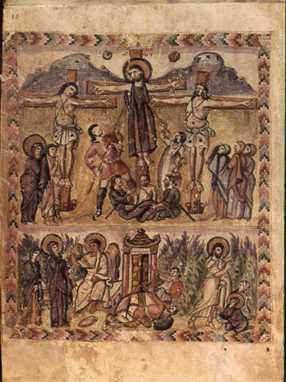
So let’s start with what they are.
Ascension
In the ancient world, ascension was part of the fabric of life. Greek and Roman heroes could ascend to godhood. This was even the claim of Caesar Augustus. Yet, the Greeks and Romans were just the latest in a long line of men who claimed to ascend to godhood. Every Pharaoh of Egypt made the same claim. Before them, Gilgamesh, the Sumerian King, claimed a similar ascension. Men becoming or being raised to godhood was rare, but it was not unheard of.
In this metaphor of ascension, there is a more profound commitment that these men did it with the might of their being. I.E., they were strong and smart enough to ascend. They were mighty enough to be considered gods. If you read about Caesar Augustus and his many accomplishments in the Res Gestae, you can easily get the sense that this man was a god. And his Res Gestae exists to tell you how his “might made right.”
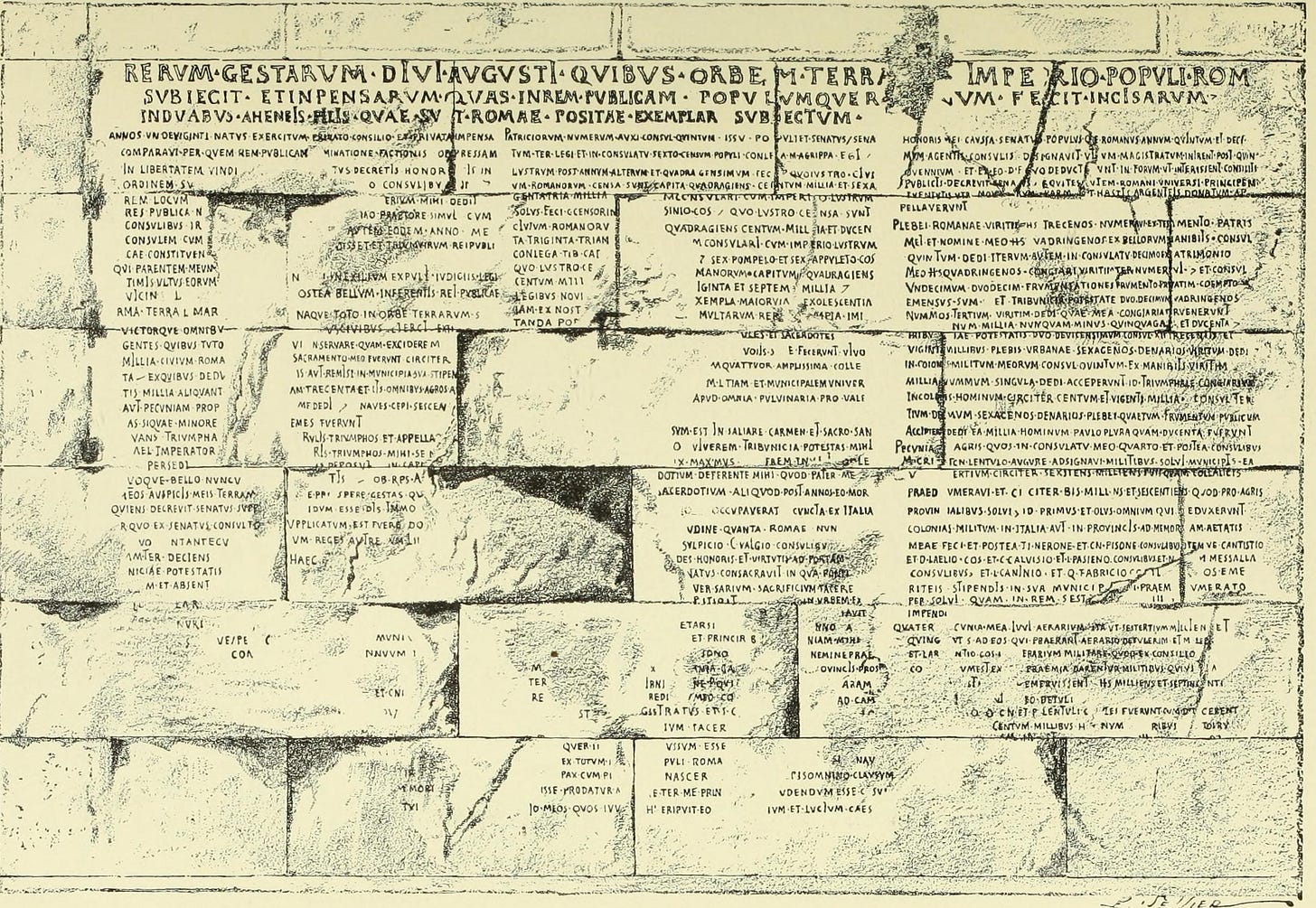
Downstream effects
Linked to the idea of ascension (because you don’t want too many people thinking they are gods) is the idea that the heroes receive a better afterlife or some such thing. For the Greeks, it was the Elysian Fields, and for the Egyptians, it was Aaru. So, while you don’t want too many people becoming gods, you do want people striving to be good citizens and receiving a reward for that (not in the present, of course, but some future date).
The concept of heaven or a good place predates Jewish theology and the ideas surrounding resurrection. It is ancient by the time Jesus and the Pharisees get on the scene to give us a different narrative. The question is, why do they offer a different metaphor?
Resurrection
Resurrection comes from two primary sources, the Macabbees and Ezekiel, and runs antithetical to much of the Old Testament. Deuteronomy, for example, sits squarely in the ascension camp. To sum up its thesis, “if you do good by Yahweh, you get good.” That’s the ascension metaphor. Yahweh’s might makes right.
Ascension was a fine metaphor for the Jews until the Maccabees. The story of the Maccabees is the story of the rise and fall of faithful Jews under the power of Empire. In the Maccabees, we encounter a group of men who are unwilling to break the Torah to save their own lives. They do right by Yahweh. Yet, Yahweh does not save them. So what’s the friction here?
Well, the Pharisees believe Yahweh is a god of justice (see this article), so they need to explain what Yahweh is doing here; otherwise, is it worth following Yahweh? The argument goes that if Yahweh isn’t going to show up for the faithful then we might as well follow the “might makes right” narrative and do what we can to get ours in this life consequences be damned in the next.
Ezekiel counters
Fortunately or unfortunately, depending on your perspective, there already existed a prophet in the Tanakh to contend with this problem, Ezekiel. Ezekiel is a rather unique character to receive contact from a deity outside its domain, without orders from the deity to expand it. But Yahweh does help Ezekiel, and he gives Ezekiel a ton of new ways to interpret what will become the Torah. Perhaps Ezekiel’s most famous is the valley of dry bones becoming flesh. It is the one the Apostle Paul references when writing 1 Corinthians 15.
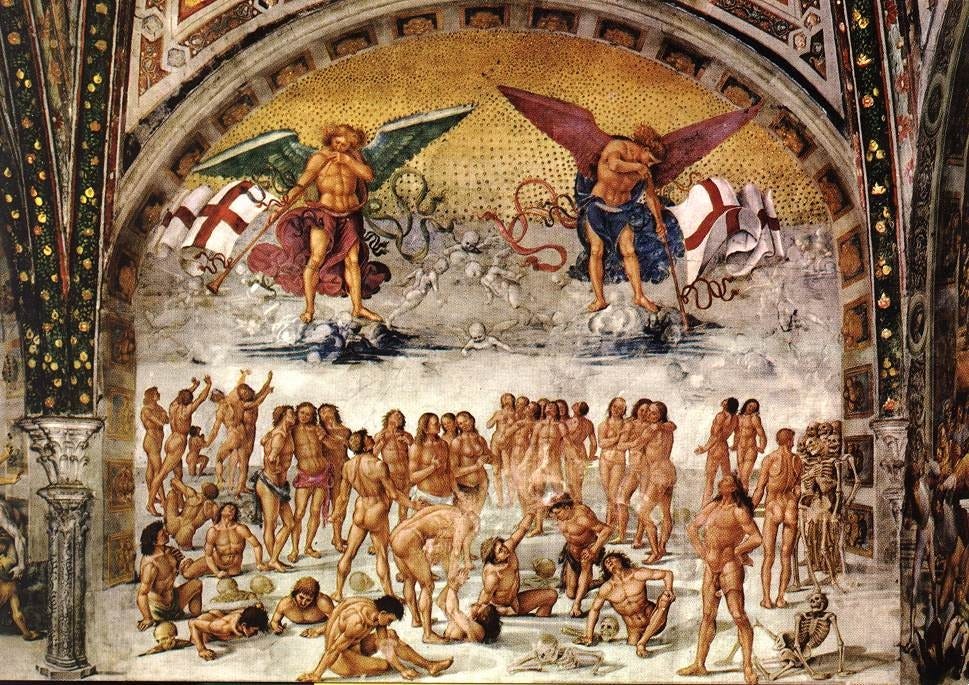
What matters to this article is that the Pharisees, including then Saul of Tarsus, re-interpret God’s sense of justice. God’s justice is something that can happen now and will happen at a later point. They don’t mean some later heavenly point; they mean a specific earthly time. They say that when the Messiah comes, the dry bones of the faithful will receive flesh just as they did for Ezekiel.
There is just one problem with that interpretation from the Christian perspective. Jesus didn’t do that. Jesus didn’t come and raise the faithful. The question we have, and Saul of Tarsus had, is why didn’t he, or what was he doing?
This is where the differences come in.
What Saul was initially taught and later came to understand was that the Jewish resurrection of the faithful was essentially an expanded metaphor for ascension. Yahweh was still using “might to make right.” If Yahweh was going to use might to make right, then we should be using all our weapons of war death, and coercion to do just that as Christians. Yet, the resurrection gives space for a different metaphor. It claims that “love makes right.”
Love of whom is the next question. And Jesus gives us the answer. The answer is to love your enemies. Why enemies? Why not everyone? Jesus is assuming that this new metaphor will create enemies from the older metaphor, and why not? The mighty will want to hold tightly to what they have won by their own strength and fortitude.
This idea of love puts us at odds with the mighty. We see this in Jesus’s last week. If you read anything I wrote last week, you should already see how Jesus stands against the metaphor of “might makes right.” He comes into conflict with the Jewish leaders and the Roman State.
So what is the difference? Resurrection is universally available and non-coercive rather than ascension, which is limited to one (or a few people) and entirely built on that person’s ability to be coercive.
Did you just get triggered?
The key hanging point for many readers is the universally available part. Let’s start by analyzing how the early church artistically captured the resurrection of Jesus. They have him leaving the tomb and pulling up Adam and Eve behind him (pictured below). Adam and Eve are representatives of the human race. The metaphor of something universally available even extends to anything that mankind touches or interacts with, like all of creation, as Paul would put it.
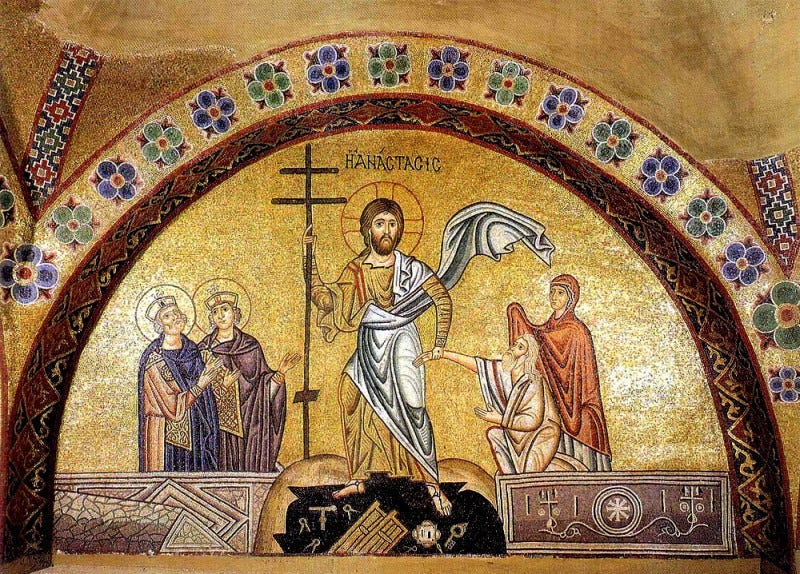
And this is logical too. If it isn’t universally available, then you have to be coerced by some form or fashion (hellfire and brimstone) to accept it. If it is coercive, then it is not the resurrection but an ascension narrative.
Now let’s be completely clear. Both of these narratives are found in the Gospels. Luke makes it exceedingly clear which one he thinks is going on in his 2nd Volume Acts of the Apostles, where Jesus literally ascends to heaven. So it’s not like I am saying you are crazy and non-faithful to the tradition of Christianity if you aren’t going for this universal resurrection idea. I get it. However, I am free to ask you, “Does ascension lead to the way of Christ?” The answer can be found in Christianity’s numerous attempts to use “might makes right.”
The Argument of Resurrection
But what argument does non-violent resistance and resurrection have? It has the history of humanity. It isn’t passive, but utilizes the outcomes of alienation and acceleration built into the “might makes right” narrative to disrupt metaphorical resonances.
Let’s picture a garden glove. It isn’t your favorite because there are rogue stitches and burrs in the design of the fabric. The glove is painful to wear, but it does give you some comfort when you feel you must control the world. “Might makes right” is all about control. Love makes right is about cooperation and collaboration.
Resurrection doesn’t force you to take the glove off. But it isn’t passive either. Resurrection points out the pain caused by ascension. And it challenges it. Jesus rode into challenge the metaphors of Caesar in the triumphal entry.
Instead, resurrection offers the glove not to control, but to collaborate with the world. Is this no what Yahweh has always sought? The metaphor is not about control, but thinking and believing in deep cooperation with our fellow person and the world around us.
Ancient Paintings
So let’s sum this up in two pictures of the resurrection. One is from the Roman Catholic (Western) tradition, and one from the Eastern Orthodox tradition. Notice the Eastern Orthodox tradition has Jesus overcoming and resisting the power of death by resurrection. He also draws out Adam and Eve, demonstrating the universality of the resurrection.
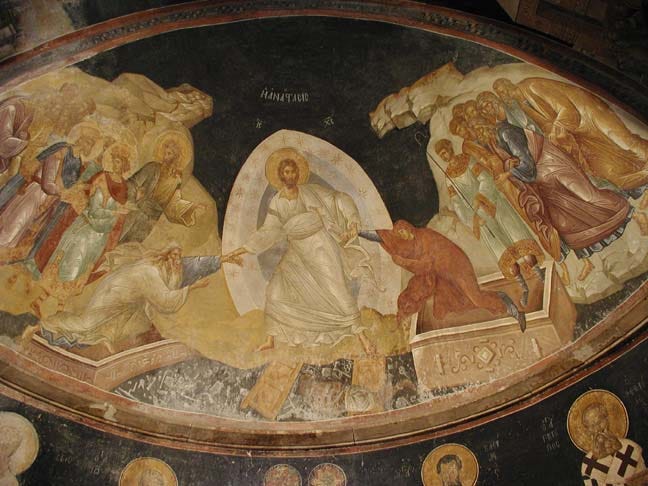
The Western (Roman Catholic) tradition commonly paints Jesus as a solo performer. Now, perhaps to this artist’s credit, he is capitalizing on Paul’s line of the first fruits of the resurrection. But if you look at enough art in the Western Tradition, Jesus is always alone. Also, notice how Jesus is crushing the soldier in this British depiction. The depiction of Jesus alone fuels Luke’s gospel narrative, which points toward Jesus' ascension.
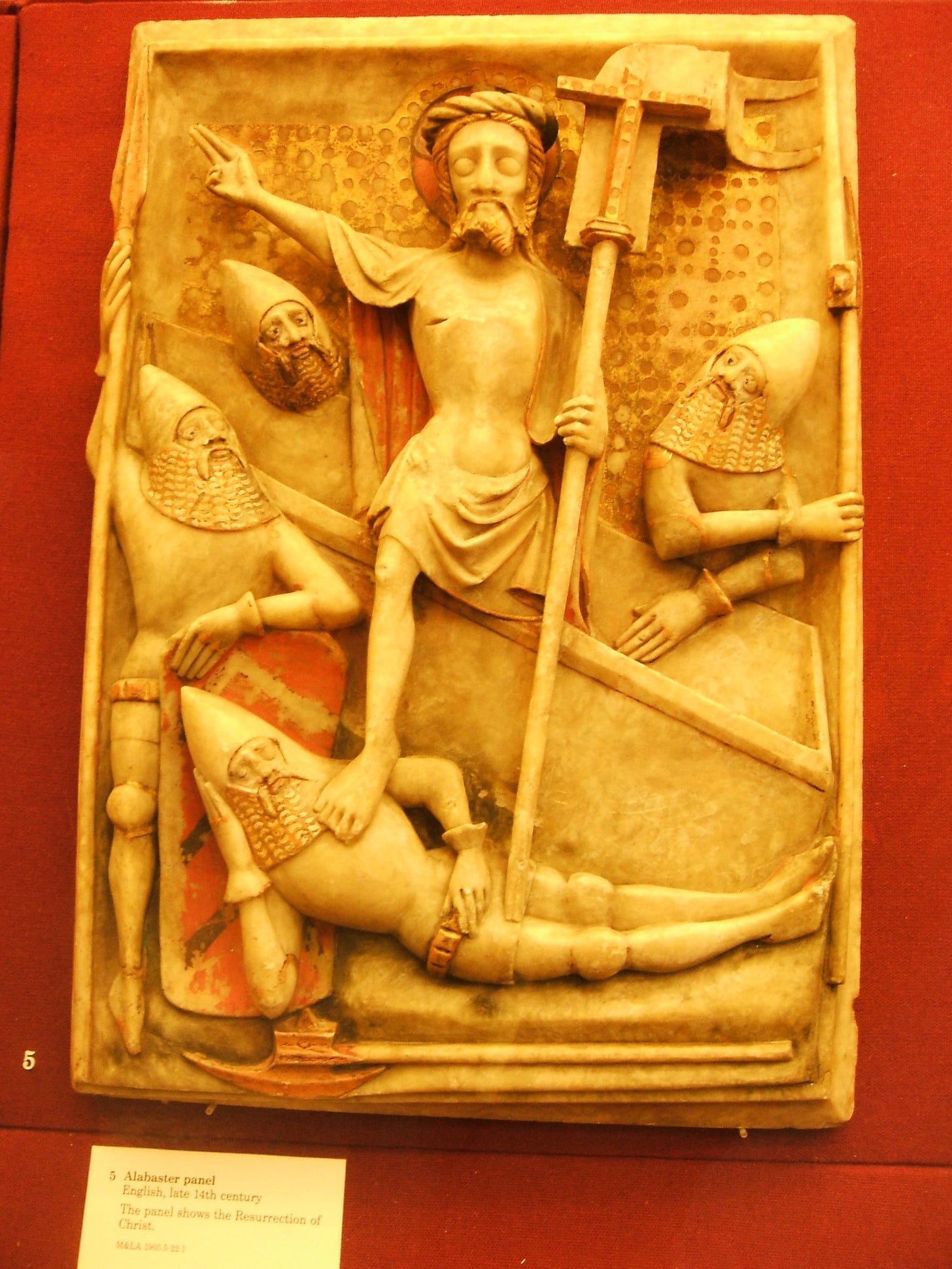
So I want to re-emphasize how both depictions are present in the Christian tradition. But the question I want you to answer is which metaphor do you follow? Do you want Jesus to force your enemies to kneel with his “might making right?” Or, do you want to love those enemies because the resurrection has already begun?
Faithful Fatherhood
Now this whole thing is one moment in my faith. All of this Resurrection v. Ascension matters deeply to Christians, even if they leave it unexamined. However, I agree with Socrates when he posits, “The unexamined life is not worth living.” Socrates makes this argument because he wants his students to find meaning and purpose in life. Similarly, I want to give you the tools to examine your life by deeply examining a singular metaphorical difference in one of the largest faith traditions on the planet.
People have gone to war over metaphorical differences. If they were willing to kill and/or die for it, I guess that you and I will too, unless we can come up with a metaphor that works for all of us. The resurrection is one of the best attempts of that from a religious and philosophical perspective. The Declaration of Independence and the Constitution are some of the best attempts so far from a government perspective.
But the question falls to you in our time. Which metaphors will you wear? I wear the metaphor of resurrection. I don’t need to coerce you to agree with me. I desire to cooperate with you. The most meaningful place for us to start is not in the realm of heady religio-philosophy. It is with our families. Because if we do all this work and fail them, will it have been worth it? There are plenty of stories in the Old Testament and Tanakh alone to tell us it isn’t worth it.
So choose your family. Start somewhere, and tell me how it works because I want to cheer you on. I want to encourage you to be famous at home by embracing faithful fatherhood.
AI Conversations:
Only the First Metaphors and this one
Last last 4 articles










Share this post